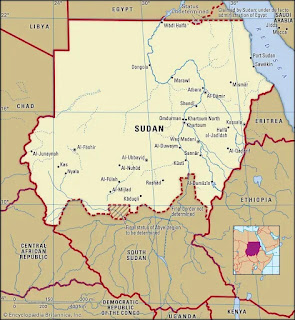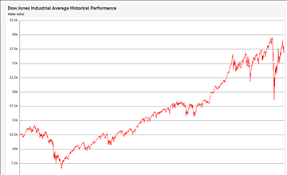 Cassidy Hutchinson, 25-year old aide to President Donald Trump's Chief of Staff Mark Meadows, was the only witness at the House January 6 Committee hearing today. While she provided further proof of what happened that day was planned, with Trump as prime instigator, there was nothing particularly startling.
Cassidy Hutchinson, 25-year old aide to President Donald Trump's Chief of Staff Mark Meadows, was the only witness at the House January 6 Committee hearing today. While she provided further proof of what happened that day was planned, with Trump as prime instigator, there was nothing particularly startling.
Well, VOX's headline was:
The 4 most shocking revelations from a real bad afternoon for Donald Trump
APPENDIX A. MOTHER NATURE VERSUS HUMANITY
Lives lost have become the headline item, and it is reported that 21 million people died from natural disasters from 1900 to 2004, or an average of 250,000/year, in the range of the number killed in the Indian Ocean earthquake-tsunami disaster the day after Christmas in 2004, which carried a damage value of “only” about $10 billion. That Sumatra earthquake released the equivalent of more than 23,000 Hiroshima Atomic bombs. But the storm surge in the Bay of Bengal in 1970 killed up to half a million. What is a life worth? At $100/person, the average 250,000 deaths/year is $25 million/year, or, at $1 million/person, make that $250 billion/year. But the Man-made category is particularly bewildering, as for example, it is said that medical mistakes account for 50,000-100,000 deaths each year and traffic deaths add up to 40,000/year, in the U.S. alone (with the worldwide annual road total being 1.2 million—ranking #3, to #1 AIDS and #2 childhood infections), and, if we take the arguably defensible position that much of this could have been prevented by a more responsible society, worldwide famine and disease account for 15-30 million deaths/year.
There are tables, and there are tables, but a recent reference on these statistics is www.geocities.com/dtmcbride/hist/disasters-war.html . Can’t set aside, too, that in the past two centuries, over 200 years, wars and rebellions have killed about a million each year. We anguish over the 4000+ American deaths (estimated civilian casualties now approaching 100,000) in Iraq since 3/19/03, but there have been one million deaths per year, every year, for the past 200 years caused by man made wars and general unrest.
While on this nostalgic note, I wonder what ever happened to Joseph Abouzed, a Sudanese the sugar company I worked for roomed me with in the early 60’s in Naalehu. He was proud of his cooking, which featured kidneys and brains. Perhaps he was a canibal. Just kidding, Joe. He went back home, near Darfur, where the UN recently reported that 400,000 have been killed and 2.5 million displaced by their own private civil war. Interesting that UN Secretary General Ban Ki-moon blamed global warming for causing drought conditions which resulted in this violence. But Joe seemed to have returned to hell while I remained in the paradise that became my life.
Then the next day, to complete the subject on risks:
APPENDIX. A. WHAT ARE THE RISKS?
Here are the worst and best life statistics from the U.S. Census Bureau:
COUNTRY LIFE EXPECTANCY
........................................2005 .....2025
...................................................(predicted)
Zambia .........................37.2 ........37.1
Malawi .........................37.6 ........36.6
Mozambique .................37.5 ........45.4
Korea, North .................70.7 ........51.3
South ...........................74.4 ........74.0
United States ...............77.1 .........76.1
Singapore .....................80.1 ........78.5
Japan ...........................80.7 ........80.0
San Marino ..................81.1 .........81.4
Andorra .......................83.5 .........83.5
San Marino, the world’s oldest republic, founded in the 4th Century, with a population of 29,000, is located in north central Italy. It has signed the Kyoto Protocol, and, maybe, is a nation to consider in the best place to live. Andorra is supposedly impoverished, and has no income taxes. It is located next to France and Spain and has a population of 66,824, but, some of them are there to dodge taxes. Females there have a life expectancy of 86.56 years. Yes, impoverished, though not as bad as before World War II.
There have been many studies on the odds of dying in the U.S. The World can extrapolate their own chances. For example, were you to die, these one chance in “x” reasons would be why: (National Center for Health Statistics, CDC; American Cancer Society; National Safety Council; International Federation of Red Cross and Red Crescent Societies; World Health Organization; U.S. Geological Survey)
Heart Disease ...............................5
Cancer .........................................7
Stroke ........................................23
Accidental Injury ..........................36
Motor Vehicle Accident ...............100
Suicide ......................................121
Fire/Smoke .............................1,116
Electrocution ...........................5,000
Drowning .................................8,942
Air travel ................................20,000
Flood .....................................30,000
Legal Execution .....................58,618
Tornado................................. 60,000
Lightning ...............................83,390
Venomous sting/bite ............100,000
Earthquake ..........................131,890
Dog attack ..........................147,717
Asteroid Impact ...................200,000
TSUNAMI ...........................615,488
See, I told you not to worry about tsunamis, for the once in 10,000 year asteroid could well be, maybe, more dangerous, according to the Holocene Impact Working Group. Definitely not worthy of your particular concern. Ah, but a massive gamma-ray burst, which could emanate from within our galaxy, wiping out the ozone layer, causing acid rain and rapid cooling our atmosphere. The last time this “might” have happened was, oh, 440 million years ago, supposedly wiping out life on Earth. Not to worry, though, for the consensus reaction was that ABC was scare-mongering in a two-hour program aired on August 30, 2006, as a 2020 special on how life on Earth could end. I should add that the contents include quoting Michio Kaku about wandering Black Holes right next to us in our own Galaxy. Well, the nearest known Black Hole is 1600 light years away (about a quadrillion miles). People are attracted to these kinds of programs.
Another way of looking at all this is that you have only a one in 17,625 chance of getting killed this year by being an occupant in a car, 1:440,951 in a plane, and 1:10,283,615 in a train. But in your entire lifetime, it is: car (1:228), air (1:5,407) and train (1:133,035) (National Safety Council). Would you bet $2 on a 100:1 horse? Probably not. So don’t worry about those 228:1 odds regarding car crashes. On the other hand, one in two hundred and twenty eight is something you can’t too lightly take.
- I recently showed how much more devastating the Black Death was around 1350 than the Spanish Flu or the COVID Pandemic.
- This subject will be a later posting, but I should underscore that the Justinian Plague that occurred just before 550 AD might have killed 40% the world population.
- The Black Death might have had as many as 100 million deaths.
- But the Justinian Plague (same rat/flea/bacteria syndrome) also might have had 100 million deaths, with less than half the population of those Medieval days.
- That name because the Byzantine Emperor of those days was Justinian.
- The world population 14 years ago was 6.7 billion. We will hit 8 billion as soon as the end of this year. So in the timeframe of the early days of my blog, our World population increased by 20%.
- The price of crude oil in September of 2008 was $106/barrel. Today? $110/barrel.
- The Dow Jones Industrial Average on 23September2008 was at 10,854. Today? 30,947, almost three times higher. The Dow lost nearly 500 today, and the volatility index is nearing 30, the number that signals DANGER!
- The horizontal axis is not indicated below, but starts in 2008 and goes to 2022.
- Looking at that comparison of how one dies, showing that if you go, there was a one chance in 5 it would have been from heart disease and one in 100 from an auto accident, cranking COVID into the analysis, this would be one in 1417.
- But WHO indicated that deaths from COVID should have been three times higher. Using that figure, the odds on dying from this disease would now be one in 472, still a lot lower than an auto accident.
- Here is another analysis for the U.S. showing:
- COVID-19 1 : 2321 (as of June of 2020).
- COVID-19 1 : 679 (as of September of 2021).
- Lightning strike: 1 : 6.7 million.
- Tornado 1 :13 million.
- Flu 1 : 6560.
- Thus, your chances of dying from COVID-19 today is around 14 times more than the seasonal flu.
- However, the odds are nearly five times higher that you will die from an auto accident than from COVID-19.
- But don't particularly sweat autos, for chances are that if you die today, going by way of a heart ailment is 100 times higher than from COVID-19.
- Where do we go when we die? Maybe on Sunday I'll further get into this, but a whole lot of Americans think:



























Comments
Post a Comment